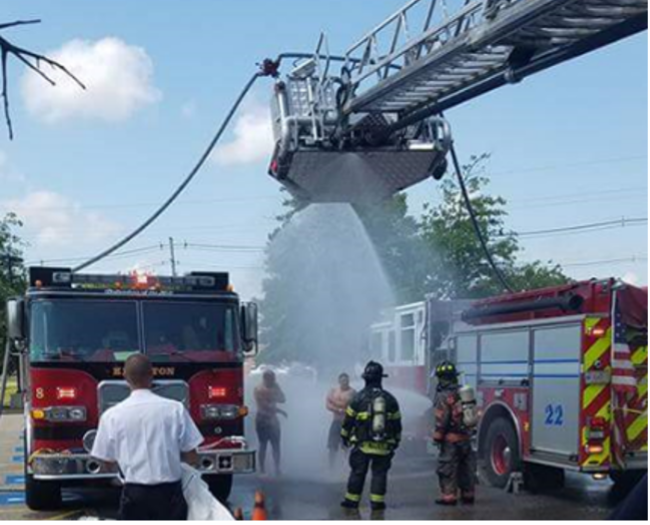The extent to which a survivor requires decontamination depends upon the contaminant, its characteristics, and the conditions of the release. For some survivors, emergency decontamination may be an essential part of life-saving first aid. For others, decontamination may aggravate injuries or delay life-saving treatment. The decision whether or not to decontaminate a survivor is based on the type and severity of the illness or injury and the nature of the contaminant. If decontamination does not interfere with essential treatment, it should be performed as quickly as possible, as the most important and effective chemical decontamination procedures are those done within minutes. Moreover, decontamination reduces the dose received by the survivor, so rapid decontamination could be essential for limiting harm from the exposure itself.59 The often cited difference in the toxicity of some nerve agents (sarin vs VX, for example) is largely due to the length of time that the agent stays on the skin before evaporating, demonstrating how rapid decontamination can mitigate risks of exposure.
Decontamination may be an essential part of life-saving first aid.

Within EPCRA-mandated accidental release notifications and follow-up information, the RP/facility must include information describing appropriate decontamination procedures for exposed individuals. In the absence of RP-provided chemical-specific decontamination advice or available safety data sheet (SDS), the local poison control center or the chemical manufacturer should be contacted to determine appropriate decontamination procedures. As a general rule, guidance from the HHS Office of the Assistant Secretary for Preparedness and Response (ASPR) for survivor decontamination should be followed.
The Primary Response Incident Scene Management (PRISM) guidance emphasizes the need for the following four actions to be performed as soon as practically possible:57
- Evacuation – Immediate movement upwind from hazardous areas
- Disrobe – Safe removal of contaminated clothing (no form of decontamination should be undertaken prior to disrobing; disrobing itself will remove the majority of the contaminant)
- Decontamination – Removal of contamination from hair and skin (and wounds) via one (or all) of three forms:
- Emergency decontamination by any available means, both “dry” absorbent (preferred) and “wet” (when the contaminant is caustic or particulate)
- Gross decontamination by passing of patients through a high volume of low-pressure water mist, or by spraying patients with hosepipes using a fogging nozzle
- Technical decontamination requiring the use of specialist decontamination units on-site or at a hospital
- Active drying – Drying the skin after any form of wet decontamination to assist contaminant removal

Wet and/or technical decontamination will not be needed for all chemical incidents as highly volatile chemicals will evaporate. The Algorithm Suggesting Proportionate Incident Response Engagement (ASPIRE) tool, available on the National Library of Medicine’s CHEMM system, provides estimates of remaining contamination post-exposure that can be used to determine whether wet and/or technical decontamination is necessary.
First responders (wearing appropriate PPE) should be prepared to assist individuals in performing the four decontamination actions described above, depending upon the needs/condition of the survivors, including non-ambulatory and disabled individuals, the elderly, unaccompanied minors, etc. Decontamination protocols should include practices that protect individuals’ privacy as much as possible. In all cases, clear communication with survivors and attention to patient modesty will be key to decontamination procedural efficiency and compliance, especially in mass events.
Planners should note the need for supplies such as absorbent materials, towels, bags for personal items, and waste receptacles, in additional to responder staffing and PPE needs. Contaminated clothing and equipment should be stored in a controlled area (warm zone, see Section 3.4) until cleanup procedures can be initiated. All personnel, clothing, and equipment leaving the contaminated area must be decontaminated. If protective clothing and equipment cannot be decontaminated, they must be properly disposed of.59
Providing accurate and timely information to health care providers is critical to their ability to provide appropriate care to survivors. Ideally, local/regional emergency department staff will receive advanced notification about the release incident before any survivors arrive at the hospital, allowing them maximum event “ramp-up” time.25,59 As noted in the Prologue, advanced notification can give medical personnel valuable minutes to prepare for the arrival of large numbers of patients and review information that might allow for a more rapid diagnosis or more effective treatment, thus potentially helping save lives (refer also to KPF 3, Communicate with External Partners and the Public). However, such advance notification may not be possible if the incident has not been identified as involving a chemical release.
Footnotes
25. U.S. Department of Agriculture. (2020, June 2). Animal Health Surveillance in the United States. Animal and Plant Health Inspection Service Veterinary Services. ;
57. Nelson, L.S., Lewin, N.A., Howland, M., Hoffman, R.S., Goldfrank, L.R., & Flomenbaum, N.E. (2011). Goldfrank’s Toxicologic Emergencies. (9th ed.). The McGraw-Hill Companies, Inc. Print.
59. U.S Coast Guard. (2005). Hazardous Materials Response Special Teams Capabilities and Contact Handbook.

